Books about the Tough Stuff: Stranger Safety, Safe Touches, and How Babies Are Made

We live in an imperfect world. At times it even seems cruel and dangerous. As much as I want to raise my children to believe that every person is good and loving, unfortunately this is not the case. I want my children to always look for the good in people, but also know just enough that they won’t naively become a victim.
I’m sharing these books because I think they are a great way to open conversations with our kids about some very tough issues…issues we don’t want to discuss, but need to. It’s our job as parents to protect our children and one way we can do this is by empowering them to help themselves through knowledge and education!
I’m sharing books about stranger safety, good touches, and even where babies come from! I am a Bible-believing Christian, so the books I recommend come through this lens. I will include any references to Christianity in the book description so that you will be informed about the content of the book, whether you share the same beliefs that I do or not. I suggest using these books as a springboard for your own family discussions. The books themselves will do little good unless there is follow-up afterwards.
Stranger Safety
I’ve never liked the term “stranger danger”, even as catchy as it is to say and remember. I don’t want my children to be fearful of strangers because 99.9% of the strangers they meet are actually kind and good. I want my children to know that it is okay to talk to strangers when they are with Mommy and Daddy. In fact, my husband and I encourage it. We want them to be friendly and respectful to the people that they meet. Since our children are always with one of us (or a trusted adult like a grandparent, teacher, or a very rare babysitter), this isn’t a problem. As they get older, however, they need to know that talking to strangers without us is not a good idea…just in case.
Big Brother is at the age where this discussion needs to take place. He is extremely friendly and can carry on a conversation with any person of any age (he takes after his Daddy). As endearing and adorable as it is, it is time to set some boundaries on the issue of stranger safety.
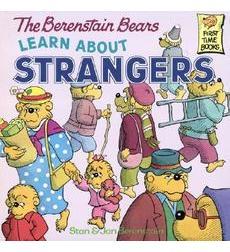
This book is a great resource for parents who wish to instill a sense of caution into their children regarding the issue of strangers without being scary or intimidating. Brother Bear and Sister Bear are very different when it comes to strangers–Brother Bear is very shy and cautious and Sister Bear is friendly and will talk to anyone. Papa Bear talks to Sister Bear about the dangers of talking to strangers and she becomes scared until Mama Bear clarifies with apples as an illustration. Most apples in the barrel are just fine, but there is sometimes a rotten one in the bunch. When a stranger has a model airplane that Brother is interested in, he forgets all about his caution with strangers and nearly gets in the car with the owner of the model airplane. Sister intervenes and the family has another discussion. The incident is not scary, which I appreciated, especially since was the first time I’ve discussed this topic with my children. A list of “rules” can be found at the back of the book, which I modified slightly to best fit our family’s needs. This book would be appropriate for children ages three to five and is a good introduction into the discussion of stranger safety.
Not Everyone is Nice by Frederick Alimonti and Ann Tedesco
This book is much more intimidating than The Berenstain Bears and is probably more appropriate for older children (6+). A young girl named Kathy has an incident as she is waiting for her mom to pick her up from school. As she is waiting, a “nice” man pulls up in his car and begins to talk to her. After chatting with the girl and building her trust, the stranger then tries to lure her into the car with candy, assuring Kathy that he will take her home since he lives on the same street. Her mom arrives right before the child gets in the car and the stranger zooms away when questioned by the mother. After the incident, Kathy’s dad talks to her about how some people may seem nice, but they really might be dangerous. He then introduces her to several ocean animals that appear harmless, yet are extremely deadly. I have not read this to my children yet, but will keep tucked away until they are slightly more mature (or if an incident happens close to our home). I think it is a great resource for school-aged children, especially for children who are no longer supervised 100% of the time.
Safe Touches
This is the part of the post where I get a little squeamish. I don’t like talking about this stuff with adults, let alone children. It disgusts and even angers me that there is a need to discuss it. But sadly, there is and it makes me want to cry. According to Parents for Megan’s Law:
- “1 in 3 girls and 1 in 6 boys are sexually abused before their eighteenth birthday.
- Children are most vulnerable between the ages of 8-12 .
- Children with disabilities are 4 to 10 times more likely to be sexually abused than their non-disabled peers.”
These statistics are scary. I don’t want my child to become a victim just because his parents are naive and don’t equip our child with this vital information. Here are some books that I found to be helpful when discussing “safe touches” with your child.
God Made All of Me by Justin S. Holcomb & Lindsey A. Holcomb
This is a great book that emphasizes that God made everything and He made everything good…including our bodies. The book tackles how our private parts are meant to stay private and that secrets and surprises are NOT the same thing. I really liked that this book promoted positive messages regarding our bodies and that it written in a very matter-of-fact manner without going into too much detail. Perfect for ages 4-8.
God Made Me: The Safe Touch Coloring Book by Dr. Beth Robinson
This coloring book written by Dr. Beth Robinson, who happens to be my Dad’s cousin, was created after she was asked to counsel a church where a 9-year old boy had molested younger children during small group meetings held in homes. The coloring book is designed to be a non-threatening way for parents to educate their children about sexual safety. The book starts off telling all the things that God created, “And best of all, God created me.” The book then goes on to state how God wants us to take care of our bodies (brushing teeth, washing hands, etc) and then begins the discussion of safe touches. Nearly every aspect of sexual abuse is tackled in this little coloring book, including assuring the child that he/she won’t get in trouble for telling a trusted adult, that it’s not okay to keep secrets when someone touches you, and a place to write the names of the grownups that you can trust. I think this is the perfect way to introduce sexual safety to your children without it being scary or intimidating. Even though it is a coloring book and the illustrations are black-and-white, it is the book I recommend ahead of all the others. If you aren’t religious, there is also a generic Safe Touch Coloring Book that is available that does not include any references to God.
Your Body Belongs to You by Cornelia Spelman
Your Body Belongs to You is a great introduction for very young children to the concept of sexual safety. The book is written in short sentences with colorful illustrations. The author encourages children not to give or accept hugs if they don’t want to. I admit that I often encourage my kids to give hugs or show affection to relatives and close friends, even when they might be hesitant at first. After all, I don’t want them to be rude! But I think this book helped me see the need to read my child’s body language to assess whether they feel genuinely uncomfortable or are just being strong-willed and noncompliant. This book does not go in-depth about unsafe touches, but does tell children that the parts of your body that are covered up with a swimsuit should never be touched, unless a parent or trusted adult is helping you bathe or go to the bathroom OR when you go to the doctor. Overall, I think this is a helpful book for very young children. If you’re looking for a more thorough book (for slightly older children), I would suggest the other books shared in this section.
I Said No! A kid-to-kid Guide to Keeping Private Parts Private by Zack and Kimberly King
This is a unique book because it is co-authored by a mother-son team. Kimberly is a kindergarten teacher who decided to write this book, along with her son, as way to help him heal after an incident where inappropriate touching occurred at a sleepover at his best friend’s house. The book is written in first person from Zack’s perspective and is quite a bit longer than the other two I shared above. It is more appropriate for school-aged children and it includes specific scenarios that a child should watch out for. The book is written for a parent to read to a child and includes some discussion thoughts throughout. The book does not use the names for private parts, but encourages the parent and child to talk about them saying, “There are doctor names and lots of other names for your private parts! We are sure you have heard of a few of them! You might want to talk about some of those names now.” The book teaches a child to identify “red flag” and “green flag” people as a way to know which adults you can feel safe and comfortable with. The book also talks extensively about treats, bribes, and threats and how they might be used to make a child do something they aren’t comfortable with. One thing that I DON’T appreciate about this book is the fact that the author uses the word “heck” (i.e. Get the heck out of there!). Although I understand that this language is meant to convey urgency, this is not a word we use in our house. This isn’t a huge problem right now because I can edit it while reading aloud, but I still would have preferred the author use a different phrase.
How Babies are Made
The question is inevitable. At some point during the first several years of your child’s life, he/she will ask how babies are made (or where they come from). If you’ve never watched this Kia commercial, watch it for a good laugh. As much as we might want to credit storks or space launches from Baby-landia for the little bundles of joy, it isn’t going to fly for our kids (even if it is much easier on us). :)
With sexuality constantly in our faces in one form or another (via billboards, the internet, television, or scantily-clad women), it is important to equip our children with facts and sex and procreation…censored facts for their tender ages, but facts nonetheless. I am sharing two books for your regarding this issue: One for younger kids (ages 5 to 6) and one for slightly older children (7 to 8). Both of these books are part of the God’s Design for Sex series. Obviously, both of these books are written from a Christian perspective with Biblical teaching on our bodies and sexuality.
The Story of Me by Stan and Brenna Jones
This book begins with a small boy asking his Daddy and Mommy to tell him where he came from. His Mom and Dad begin by telling him that God created both him and his Mommy and Daddy (and their Mommies and Daddies). God began by having his Mommy and Daddy love each other. Then after they were married, God took a tiny piece of his Daddy’s body and a tiny piece of his Mommy’s body and made him. God made a special place in his Mommy’s body for him to grow while he was a tiny baby. And then when it was time, the baby came out. The book uses medical words for the body parts, which you may or may not be comfortable with. I personally would rather my kids know the actual names of their body parts rather than nicknames. After this description, the book the proceeds to talk about how God made us to love and obey him. It also tells how we can show love to each other by hugs and kisses, and taking care of each other. There is a short page that describes how hugs and kisses aren’t good if you don’t want them. “God doesn’t want anyone to take love from you that you don’t want to share.”
Overall, I think this is a good book for traditional families who are striving to raise their children to love and honor God in the way that is shared in the Bible. This book might be confusing for children who were adopted, although there is a short mention in the book regarding adoption. This book would also cause more questions for children who are raised in a single-parent family. The publisher recommends this book for ages 3-5. I would say that it is more appropriate for ages 5-6 or even older!
Before I Was Born by Carolyn Nystrom
I’ll be honest: I nearly had an anxiety attack while reading this book. It is VERY descriptive in words and pictures, even though the pictures are soft and muted. The publisher recommends this book for children ages 5 and 8. I have a five-year old and there is NO WAY that we will be reading this book within the next year or two. Not because I think it is bad or dirty, but because I don’t think he is ready for it. I do, however, think it is an important book to read when the time is right (like 22…just kidding, around 7-9). This important information needs to come from PARENTS first, not peers or schools. We need to be responsible for ensuring that our children know how God created our bodies. Again, this book approaches the subject of sex from a Biblical viewpoint, including the fact that God designed sex to take place when two people are married. It also goes into a lot of detail regarding conception, pregnancy, and birth. Overall, it is a beneficial book for parents to use a springboard for “the talk”.
Phew…now we’ve tackled a few of the tough subjects in life with books. Which books do you prefer to use for teaching these subjects?
Also, be sure to check out these books on another super tough subject: Death, loss, and grief.
*Please note: The links in this post are my affiliate links. Please read my full disclosure policy.


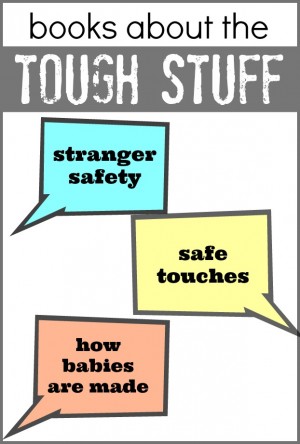
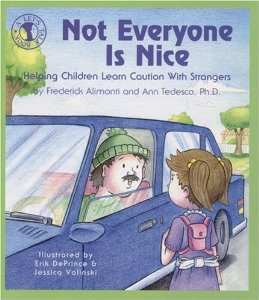

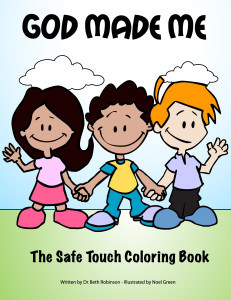
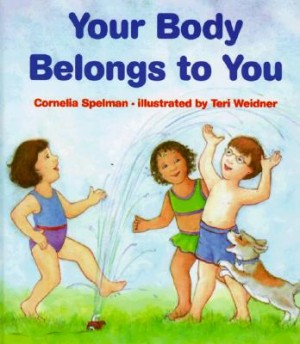
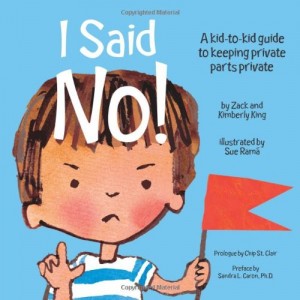


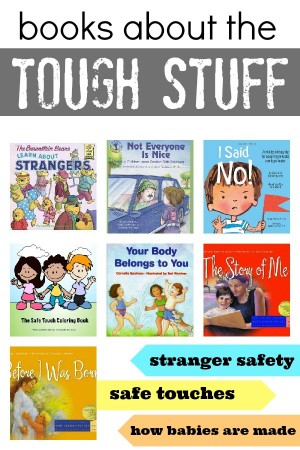

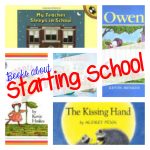


I am wondering if there is a book for preschool age children concerning terminal illness of a parent ? My husband has ALS and our daughter is 4 years old , we don’t know how to explain to her that Daddy is unable to do a lot of things with her .
Thank you so much. I have been starting to discover I need to talk about these with my 4 year old so he can understand. Reading books gives a great platform for good conversations.
Actually teaching children not to talk to strangers when youre not around is dangerous. What if they wonder off and get lost? What if something happens to you like a car accident and you need help? Being able to tell people what youre allergic too or other medical conditions is important. What we should be telling children is to fight back. Most cases of child abuse and abductions involve people the child already knows that the parents trust like a teacher. Equiping children to recognize that something is wrong and to run and get away from it. Then tell the first person they see which could be a stranger for help is more important for child safety. The likelihood of a stranger harming a child is less than being struck by lightening.
Protecting the Gift: Keeping Children and Teenagers Safe (and Parents Sane) by Gavin de Becker deals with the topic of talking to strangers, and what he says is very similar to what you say. I had always thought the “don’t talk to strangers” rule was a good one, but this book made me see the issue very differently and how problematic that advice can be. I can’t recommend this book enough!
I think it kind of goes without saying that we can’t give our kids a blanket statement about not talking to strangers. We also have the responsibility to help them learn common sense and to help them discern which strangers are safe to talk to when they are alone. We read a book with our 4 year old called “Ashley Learns About Strangers” that talks about what to do in a situation when you get separated from a parent or other caregiver, as well a few other stranger safety tips.
Thanks for posting this. So helpful and made me realize I need to start tackling these issues. So encouraging to have good places to start.
Seriously, thanks for posting these books. What a great resource for parents of young children!
Thanks for sharing the book information. We actually did a unit about this stuff. Feel free to check out on our learning time blog. http://www.everystarisdifferent.blogspot.com/2013/05/my-body-reproductive-system.html. I’ve pinned this post so I will remember the books for next time!
Thanks for this list! My 5-year-old has started asking questions about where babies come from. I just requested “The Story of Me” from our library – I think this will be a wonderful resource! I appreciate your wonderful post. As parents, these are tough things to think about – but we HAVE to think about them.
Thank you so much for this fantastic list! One book for adults (not kids) I’ve really enjoyed and have learned a lot from is “Protecting the Gift: Keeping Children and Teenagers Safe (and Parents Sane)” by Gavin de Becker. This has made me much more aware of how to best protect to my kids. And now I have ideas of books to read to them too, thanks to your wonderful list!
Thanks for this list of books & your thorough reviews. Are you familiar with the American Girl books? (http://www.amazon.com/Care-Keeping-American-Girl-Library/dp/1562476661) I haven’t used them, but hear they are really great. I am planning on taking one of my daughters (11 yo) on a little weekend getaway this summer to bond over the Passport 2 Purity curriculum. I’ve heard great things about it, but I have to admit that I’m not looking forward to some of the discussions ;o/
Thanks for this post. My 3 year old daughter has suddenly become this super social creature who will talk to anyone and everyone. I like the concept of it being ok to talk to strangers when mom and dad are around, or even asking us permission to go talk to them. But if we’re not around or something happens, I’ve heard of instilling in kids the idea of always looking for another mommy with kids nearby as a safe person to go to.
I was very impressed at her yearly checkup when the doctor explained to her how he was going to check her private parts and the only reason it was ok was because mommy was right there too. It wasn’t even good enough that he told her he was a doctor – he actually had my daughter ask me personally if it was ok for him to check her parts.
I always appreciate the depth of your book reviews. I’ll pin this for later reference, as our little guy is only 15 months. Your review of Bibles for children in a previous post was very helpful. I ordered a couple of them. Our toddler loves the huggable one. Thanks!
Thanks for posting these books. We checked out a book last week that I thought was well written regarding strangers. It is titled “Once Upon a Dragon: Stranger Safety for Kids and Dragons” by Jean E. Pendziwol
Thank you so much for posting this!
Great post. Who Made Me by Malcolm Doney is also another great one for addressing how babies are made-I’ll admit that as an adult reading some of the wording it’s quite explicit BUT that said I remember it being one of my favourite books to look at as a little girl, I just thought of it as the baby book and didn’t take on board most of the words.
Thank you for this post! The Berenstain Bears book is great. I have a 4 year old and a 5 year old. I recently got the book “Before I was Born” and had the same thoughts you did. I definitely don’t think that book is appropriate for 5 year olds. It goes into too much detail for children that age.
Thank you! Thank you! Thank you! This is exactly the list I have been looking for! I’ve been trying to find children’s books on these topics especially with a Biblical perspective. Will definitely be looking into several of these!